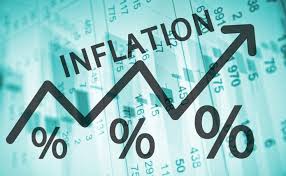The national year-on-year inflation rate for April 2020 hits 10.6%, which is 2.8 percentage points higher than last month, the Ghana Statistical Service has said.
The year-on-year inflation for March 2020 was at 7.8 per cent. The Month-on-month inflation between March 2020 and April 2020 was 3.2%.
These are highest recorded year-on-year and month-on-month inflation rates since the CPI rebasing in August 2019.
Inflation rates for Food and Non-Alcoholic Beverages was at 14.4% and Housing, Water, Electricity, and Gas at 11.2%.
Food and Non-food Inflation
The Food and Non-alcoholic Beverages Division recorded a year-on-year inflation rate of 14.4%. This is 6 percentage point higher than March 2020 (8.4%) and 6.5 percentage points higher than the average Food inflation rate recorded in the previous eight months (7.9%).
This translates to Food being the predominant driver of year-on-year inflation. Food contributed 59.6% of the year-on-year inflation in April 2020.
In the previous eight months, this contribution was on average 44.1%.
Month-on-month Food inflation stood at 6.4%, meaning that between March 2020 and April 2020 the average price level of Food and Non-alcoholic beverages increased by 6.4%.
Food is also the predominant driver of month-on-month inflation. Within the Food Division, Vegetables (+37%) and Fruits & Nuts (+ 20.5%) were the Subclasses with the highest rates of inflation for both year-on-year and month-on-month inflation.
Within the Housing, Water, Electricity, and Gas Division (+11.2%), the Subclasses ‘Solid Fuels (16.7%)’ and ‘Materials for the Maintenance and Repair of Dwelling (13.1%)’ recorded the highest inflation rates.
Regional Inflation
At the regional level, the overall year-on-year inflation ranged from 2.3% in the Upper East Region to 15.1% in Greater Accra.
Greater Accra (20.8%) and Ashanti (18.2%) had the highest rates of Food inflation, while Eastern Region saw the highest Non-food inflation (12.5%). Upper East, Northern, Eastern, and Central Region experienced higher NonFood than Food inflation, the opposite was true for the other six regions.
Imported and Local Inflation
Inflation of imported goods was 4.9%, while the inflation of local goods was 13.1% on average. This is the highest rate of local inflation and the lowest rate of imported goods inflation since the rebasing in August 2019.
The month-on-month inflation for imported goods was 0%, while month-on-month inflation for local goods was 4.5%. The main contributor to local inflation was the inflation of locally produced foods.
Latest Stories
-
African Capacity Building Foundation to establish African School of Regulation in Accra
1 min -
Gospel musician Padmore Abekah releases Mother’s Day Anthem ‘Sweet Sweet Mother’( Ena Pa)
8 mins -
Ejisu by-election: We will defeat ex-MP going independent – Wontumi
15 mins -
A tale of heartbreak and closure
25 mins -
JamRok Bar peddling nothing but falsehoods, defamatory statements against Mr Drew – Management
38 mins -
Ashanti Regional Minister must apologise or… – ECG workers protest arrest of colleague
44 mins -
We are determined to achieve universal access to electricity by end of 2024 – Finance Minister
51 mins -
High Court adjourns Anti-Gay Bill case ‘against’ Akufo-Addo to April 29
59 mins -
Akesse Brempong to hold ‘Davidic’ concert on April 21
2 hours -
Here’s why Dr. Steve Manteaw supports Otumfuo’s call for ECG, GRIDCo divestiture
2 hours -
Ejisu by-election: Former NPP MP files nomination to contest as independent candidate
2 hours -
Aklerh out with ‘Dancehall Queen’ EP
2 hours -
Burna Boy makes Time Magazine’s 100 Most Influential People
2 hours -
National Peace Council cautions clergy against spiteful comments ahead of December 7 polls
2 hours -
My wife sent nudes to her Dubai lover when I was battling kidney disease – Erico
3 hours

